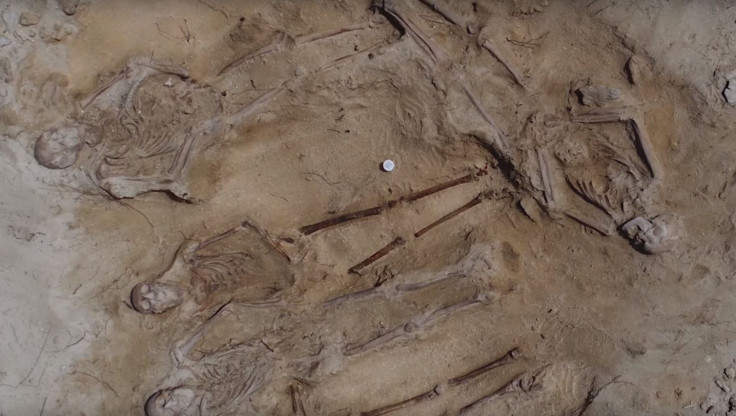400 year-old mass grave from shipwreck discovered on 'Murder Island'
Researchers believe victims may have died before murderous rampage which left women and children dead.

It's nearly 400 years since a bloody mutiny unfolded off Australia's west coast, but archaeologists are still uncovering gruesome secrets of how the sailors came to their end.
Researchers have found a mass grave holding the remains of five individuals believed to have been travelling on the Batavia – a Dutch merchant vessel shipwrecked on a small coral island about 60km off Australia's west coast in 1629.
Arranged in an orderly manner and lying next to some artefacts, they are believed to have escaped the murderous fate that befell their fellow travellers.
They would have been among the nearly 300 survivors that ended up stranded on Beacon Island – part of the Houtman Abrolhos, a chain of more than 120 islands off the west coast of Australia.
Dubbed Murder Island because of the mutiny that unfolded in the following months, more than 100 survivors are believed to have died after the shipwreck, many of them murdered.
The latest grave site discovery was made last month by an international team co-led by Professor Alistair Paterson from The University of Western Australia (UWA) .
He said the grave provided "vital clues" as to what happened on Beacon Island, adding: "The communal burial discovered this month suggests careful and respectful burial, not the hurried work of hiding murder victims.
"These may be people who died in the days following the wreck but before the mutiny and mass killings were under way."
He added: "The Batavia story is an extraordinary story. This mutiny and shipwreck in 1629 led to the deaths of many people, many of whom were murdered, many who died naturally.
"Our discoveries around finding these burials allows us to tell and understand the events much better than perhaps previously."
The Batavia's maiden voyage saw the 17th Century vessel depart Holland carrying a mix of sailors, soldiers and civilians, with a view to obtaining spices from the Dutch East Indies (now Indonesia).
Sailing under the command of Francisco Pelsaert, a botched mutiny attempt saw the ship sail off course and hit Morning Reef in the Houtman Abrolhos.
Some 40 people drowned, while 282 others managed to scramble on to nearby Beacon Island.
When Pelsaert left the group to find fresh water and seek help, mutineers among the survivors killed and raped dozens, including women and children.
Other gravesites excavated by archaeologists in the area have uncovered the brutality of the deaths suffered, including one skeleton belonging to a man missing the top of his skull from a sword blow.
UWA Associate Professor Daniel Franklin said: "A total of 10 individuals have been discovered in a central part of Beacon Island in the past three years during our research project, providing valuable new information about the events following the wreck of the Batavia."
The bones uncovered last month will now be sent for testing to help piece together who the remains belonged to.
"Isotopic analyses are allowing us to determine where these people originated from," said Dr Liesbeth Smits, from the University of Amsterdam.
"Surprisingly many of them did not come from Holland, but moved there to join the ships of the Dutch East India Company."
Jeremy Green, head of Maritime Archaeology at the Western Australian Museum, has been investigating the Batavia and the story of its survivors since the wreck's discovery more than 50 years ago, and led the excavation of the wreck site in the 1970s.
"This latest find adds significantly to the wealth of information we have on Batavia, and shows that there are still very important discoveries to be made about the remarkable human story behind one of Australia's oldest known shipwrecks," he said.






















